Try GOLD - Free
Fasten Your Seat Belt
Muse Science Magazine for Kids
|February 2017
What if We Treated Melting Ice Like Other Possible Catastrophes?

You hop in the car to ride to soccer practice. What do you expect to happen on the way? You might have to waste time stuck in traffic or sit through awful music on the radio. But the trip will almost certainly go smoothly, as usual. You might even make great time and get to hear your favorite song. Yet you buckle your seat belt anyway. Why do you do that? Because every time you get in a car, there is a very small chance that you might get in an accident that could hurt or even kill you.
In 2014, about 35,400 people died in accidents involving vehicles. Each year, Americans have about a 1 in 48,000 chance of dying while riding in a car. Of course, that translates to a 99.99 percent chance of not dying that way.
However, we still put a lot of effort into trying to prevent injury or death in a car accident, notes Richard Alley, a climate scientist at Penn State. We put on seat belts. Our cars feature airbags and self-braking systems. Parents buckle babies in car seats. Police monitor driving speeds and arrest drunk drivers. Alley says, “We put a lot [of money and effort] into something we do not expect to happen [to us] because if it were to happen, it would be so bad.”

We all agree that wearing a seat belt in a car is a good idea. We don’t expect a catastrophe, but one is possible. So it makes sense to buckle up to try to avoid the worst possible outcome. Now think about climate change. Does our planet need a seat belt?
This story is from the February 2017 edition of Muse Science Magazine for Kids.
Subscribe to Magzter GOLD to access thousands of curated premium stories, and 10,000+ magazines and newspapers.
Already a subscriber? Sign In
MORE STORIES FROM Muse Science Magazine for Kids
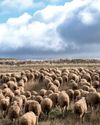
Muse Science Magazine for Kids
ANIMAL FIREFIGHTER TO THE RESCUE
Can animals help manage the risks of deadly wildfires?
3 mins
Muse July 2025: The Story Behind Wildfires
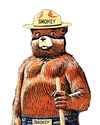
Muse Science Magazine for Kids
FIRE DANGER
WHY THE RISK OF WILDFIRES KEEPS GROWING
4 mins
Muse July 2025: The Story Behind Wildfires
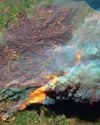
Muse Science Magazine for Kids
The Miller NEW Normal
WHAT TODAY’S WILDFIRES TELL US ABOUT OUR FUTURE
8 mins
Muse July 2025: The Story Behind Wildfires
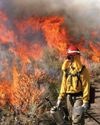
Muse Science Magazine for Kids
WOMEN AND FIREFIGHTING: A GOOD FIT
Jessica Gardetto is a firefighter. Her father was, too. “I grew up with my dad coming home smelling like wildfire and covered in soot,” she says.
1 min
Muse July 2025: The Story Behind Wildfires
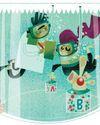
Muse Science Magazine for Kids
What is happening on your fingertips when they get all wrinkly in a hot tub?
—Felix G., age 10, Montana
1 mins
Muse July 2025: The Story Behind Wildfires
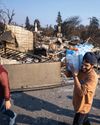
Muse Science Magazine for Kids
WHEN the SMOKE CLEARS
THE LINGERING EFFECTS OF THE RECENT PACIFIC PALISADES AND ALTADENA EATON FIRES
6 mins
Muse July 2025: The Story Behind Wildfires

Muse Science Magazine for Kids
PICKING TEAMS
Keep it fair with a strategy that relies on geometry.
2 mins
Muse July 2025: The Story Behind Wildfires
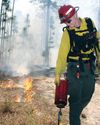
Muse Science Magazine for Kids
SHAN CAMMACK
WILDLIFE BIOLOGIST AND FIRE SAFETY OFFICER
3 mins
Muse July 2025: The Story Behind Wildfires
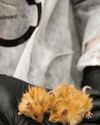
Muse Science Magazine for Kids
Scientists Create Mice With Woolly Mammoth-Like Fur
RESEARCHERS AT A COMPANY IN TEXAS ARE WORKING TO CREATE A LIVING ANIMAL THAT RESEMBLES THE EXTINCT WOOLLY MAMMOTH. Recently, they produced mice with traits of the large mammal. The mice all have coats with mammoth-like fur, and some of the small mammals also have genes that help them store fat. Both features would help the animals survive in the cold Arctic, where the woolly mammoth once lived.
1 min
Muse July 2025: The Story Behind Wildfires
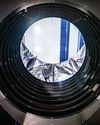
Muse Science Magazine for Kids
Cool Sunshade Added to the Nancy Roman Space Telescope
THE NANCY ROMAN SPACE TELESCOPE IS A NEW TELESCOPE THAT NASA IS BUILDING AND WILL LAUNCH INTO SPACE, LIKELY IN EARLY 2027.
1 min
Muse July 2025: The Story Behind Wildfires
Translate
Change font size

